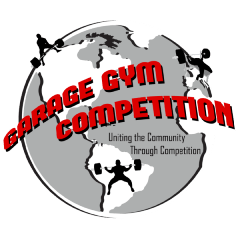Should Kids Lift Weights?
The topic of kid’s lifting weights is one of the most controversial topics in the fitness industry. Parents can be terrified to include their kids in an activity that they perceive to be dangerous. The intentions are in the right place though, no one wants to risk injuring their kids. Then you have the other side, where they are having little kids with no experience tackling monster weights. You can see comments and videos ranging from curious, all the way to the EXTREME on both sides of the discussion. Unfortunately this creates more noise on a topic that should likely be solved with an answer somewhere in the middle. So lets tackle the question… Should Kids Lift Weights?
This article assumes you have at least a general understanding of lifting and the names of exercises. Just a fair warning.
Table of Contents
Key Notes
Yep! Kids potentially get even more than we do as adults, out of spending time in the gym. Just make sure to have the right focus.
Transparency Note
Some of the items and links in this article might be affiliate links, or might be linked to a Sponsor of the Garage Gym Competition. These links and sponsorships help fund the website, the competition itself, the newsletter, non-profit donations, and everything else we do FOR FREE here at the GGC. I like to be transparent so you know what is up. I appreciate the support if you choose to use the links.

Foundational Movements
Lets take a look at the foundational movements before we specifically dig into should kids lift weights or not. They include a push, pull, squat, hinge, and rotational movement. Examples include Bench for Push, Row for Pull, Squat for Squat, Deadlift for Hinge, and some twists for rotational movement. You might see some coaches add in a lunge, a carry, or other items but the idea is the same. We mix up the foundational movements and vary them in different planes and loads to create a workout program. Basically, everything you will do in the gym will fall into one of these categories.
Daily Movement
Almost every single thing we do throughout the day can also be categorized under one of these foundational movements. For example:
- Rolling out of bed: Rotation
- Sitting down on and getting off the toilet: Squat
- Getting back up off the ground: Push
These are just a few examples of some of the most simple activities of daily living. I point out these examples specifically because there are plenty of people out there who get to a point in their life where they can’t get out of bed, can’t get off the toilet, or can’t get up off the ground without help.
This is a MAJOR problem!
As a society, we are trajecting towards a more sedentary lifestyle. That is one reason we are seeing obesity rates skyrocket! We are doing this to ourselves, however. The people who get themselves in the weight room and practice these movement’s in varying ways and under different loads are the ones who don’t struggle with this later in life. The gym, especially through lifting, is also a major player in managing weight. But it has to be a routine we practice often, and forever! Once it is gone, is is infinitely more difficult to get it back (the movement AND the exercise habits).
Which takes us back to our question… Should Kids Lift Weights?
START RIGHT NOW!
This is why it is so important to get into the weight room as early and as often as possible. This can start at the earliest of ages. We want to start setting good examples and habits for our children as early as Day 1. In fact, children are already doing all of these foundational movements that I listed earlier.
Squat
Have you ever seen a kid play with their toys? They’re in the perfect deep squat position, and they can hold that for as long as they want. That is the position that our bodies want to be in for a squat. For most adults, it’s simply been too long since they’ve been in that position. This makes squats difficult, makes your knees hurt, etc. If we put our body into that position throughout our entire life, and never stop, we can keep our mobility. This is why it’s so important to get your kids in the gym early! That way they never hit that regression.
Hinge
Most people think of hinging as a deadlift, because that is the most common of all the hinge movements. We all do them everyday whenever we pick things up off the floor. But what people don’t realize is that they are working on hinge movements in exercises like a plank. You are training your body to stay in that un-hinged position against resistance. Think about it. It’s like holding an isometric exercise or exaggerating the eccentric (or lengthening phase) of an exercise, you’re still working the same muscle groups. An eccentric pull-up works similar muscles as a regular pull-up, even though they are different movements. For a deadlift, you have to be able to brace your core under load to complete the lockout, where a plank is literally an exercise that trains bracing your core under load. Not many people realize how similar they are in terms of accessory muscles.
Now imagine a newborn learning to crawl. Before they ever get moving, they can get up in a plank position while trying to learn this new movement. They’re bracing their core and getting stronger to help them crawl, the same way you brace your core doing planks in the gym for abdominal work. The same goes for deadlifts. It doesn’t have to be a barbell. The same way you pick up a couch to move, they do the same with anything they can find because they’re so curious to learn and try new things.
Push
The same way that kids hold themselves up in a plank, they’re doing the same thing to get their torso up off the ground when they’re beginning to crawl. It takes so much upper body strength at that age to hold themselves up, as their head is proportionally larger than you or I. This is a version of heavy resistance training in their world, which is why you’ll see arms begin to shake and eventually collapse as they come falling back to the ground. But they always come back for more, because that’s the only way they’ll progress. Just like you and I in the gym.
Rotation
Babies do this almost immediately after they’re born. You give them “tummy time” and they’re trying to roll on their back, or vice versa. This requires an extreme amount of core strength at their age to do this. But it’s a completely natural movement that they learn on their own, you don’t have to even teach them.
This is why they’re called foundational movements
We are doing them as early as Day 1 and continue to do them throughout our entire lives, even in the weight room. We can scale these movement’s for any experience level, and that is why exercises like squats can range from air squats to barbell back squats; there is going to be something for everyone. Even children! If newborns are mimicking the same thing you and I are doing, then it is safe for them to be in the weight room and learning new movements by watching. They tend to learn things on their own, and quickly, from watching you and what you’re doing in the gym. And remember that NO one is more intrigued to try something new than a baby.
So even if they’re still in their rocker, you can’t go wrong by getting them out there watching you.
But Should Kids Lift Weights?
Where people begin to argue that it is unsafe is when you start introducing advanced movements or extreme loads way too early. This can be very true, but the same goes for you and I. If I was to introduce you to a complex movement you’ve never done before or overload a barbell and put you under it, that can cause severe injury or bad lifting habits in the long term. It’s not the age that is the problem, it’s the lack of knowledge of proper programming that causes the weight room and lifting in general to be unsafe. But in general, to have your kid in the weight room is completely safe and one of the best things you can do for them in the long run.
Lifting Habits
It’s so hard to break bad lifting habits. It is much more beneficial to teach them the right way early, rather than try to break those bad habits later. It’s also going to be a lot easier to start adding weight onto exercise movements and gain strength when they’re being performed correctly. You shouldn’t be afraid to bring your kids into the weight room from Day 1. Then they’ll never know anything besides that. They will watch you and begin to learn those good habits from you and you can teach them that a healthy lifestyle is a priority in your family’s life.
Wrap Up
So the question was… Should Kids Lift Weights? I’d argue, they already are. No matter who you are, you sit down, stand up, pick things up, and move and twist and roll around from the beginning to the end of your life. Spending time practicing these foundational movements simply means you’ll be better equipped to do it for the rest of your life.
You’ll notice that a lot of this article is focused on children as young as newborns. That is because everything we do in the gym, they also do, but on a very scaled version, and that is why it is completely safe to have them in the weight room.
Where the stigma of danger comes from is from the lack of knowledge in creating a proper workout program in the weight room, especially for a specialized population such as children. If you think that’s you and would like to learn more, be on the lookout for our next article where we are going to be diving deeper into HOW kids should be lifting weights and when to actually start introducing equipment into their routine.
About The Article Series


Jeff Kimpel is the owner and host of the Primal Armor podcast where he takes his education and experience and dives deep, but succinctly, into a topic to help you be a better version of yourself. With the birth of his daughter, Jeff has reinvigorated his passion for getting kids active and involved in exercise. His Masters Thesis involved kid’s fitness and sports!
Our aim is to help you get your kids into the gym. Because strong families lift TOGETHER!
You can find more on the podcast here.
📌Enjoy Powerlifting? Want to enter a FREE competition with thousands of dollars in prizes and donations to non-profits? Check out our next event!
🏅 Own a home gym? Like to save money? Check out my full list of discount codes.



